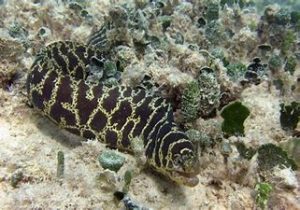Moray Eel
Moray eels are fascinating and unique marine creatures. Here are some interesting facts about moray eels:
Appearance: Moray eels have long, snake-like bodies and lack pectoral and pelvic fins, but they are true fish, and do not belong to the reptile family. They are known for their elongated, narrow heads with large mouths filled with sharp teeth which are pointed backwards, preventing prey from escaping. They have a mucus-covered skin, which gives them a slimy appearance.
Species Diversity: There are over 200 known species of moray eels, belonging to the family Muraenidae. They vary in size, with the smallest species measuring around 8 inches (20 centimeters) in length, while the largest can reach up to 13 feet (4 meters). The average weight of the Moray Eels is about 30 pounds.
Habitats: Moray eels are found in various marine habitats, such as coral reefs, rocky crevices, and shallow coastal waters. They are known to inhabit both tropical and subtropical regions around the world.
Nocturnal Predators: Moray eels are primarily nocturnal hunters. They have excellent senses of smell and can locate prey by detecting chemical signals in the water. They feed on fish, octopus, squid, cuttlefish, crustaceans, and mollusks. Moray Eels use a specific technique while hunting other animals. They grab their prey using the element of surprise and wrap its body around it until it becomes flattened enough to be swallowed or they may tear apart their pray and eat it one bite at a time.
Unique Jaws: Moray eels have a fascinating jaw structure. Unlike most other fish, they have a second set of jaws called pharyngeal jaws located in their throat. These jaws can extend forward to grab and pull prey deeper into the eel’s mouth.
Protective Behavior: Moray eels are generally secretive and tend to hide in crevices or coral reefs during the day. When threatened or cornered, they can display an open-mouthed defensive posture to ward off potential predators or intruders.
Reproduction: Moray eels have complex reproductive behaviors. They are oviparous, which means they lay eggs that hatch externally. Males release sperm over the eggs after the female lays them, and the eggs are then left to develop and hatch on their own.
Lifespan: The lifespan of moray eels varies depending on the species, but many can live for several decades. Some larger species have been reported to live up to 30 years or more.
Myth and Misconception: Moray eels are often portrayed as aggressive and dangerous in popular culture. While they can bite if provoked or cornered, they are generally shy and prefer to avoid human interaction. Most incidents involving moray eel bites occur when divers or fishermen accidentally disturb or provoke the eels.
Conservation Status: The conservation status of moray eels varies among species, but some populations are facing threats due to habitat degradation, overfishing, and pollution. The International Union for Conservation of Nature (IUCN) lists several species as vulnerable or endangered, emphasizing the need for their protection.


